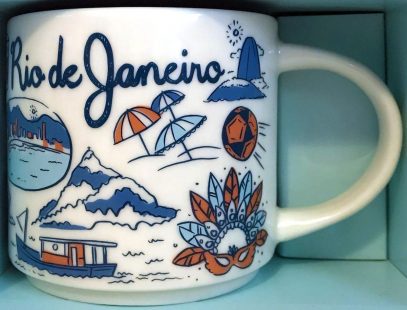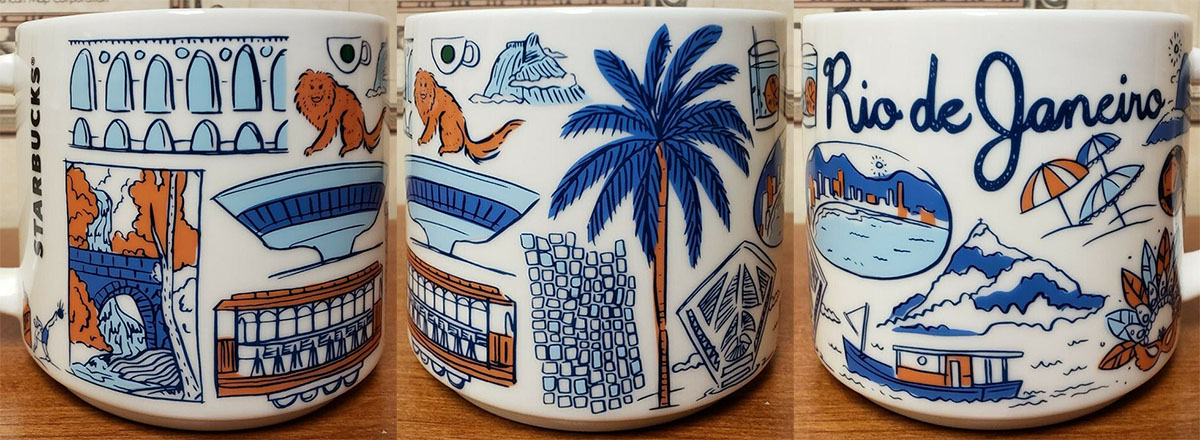
Been There – Rio de Janeiro
Cidade Maravilhosa (Marvellous City) is joining BT mugs series with Starbucks Been There – Rio de Janeiro.
Did you know that the name of the city literally translates as the River of January? And the reason for this is pretty prosaic: Portuguese expedition under explorer Gaspar de Lemos first encountered Guanabara Bay on 1 January 1502 and named it Ria de Janeiro (“January’s Lagoon”). Ria became Rio (river) later and the actual city was only founded on 1 March 1565 under the name São Sebastião do Rio de Janeiro.
Another interesting fact: in 1808, fleeing from Napoleon’s invasion of Portugal, the Portuguese royal family and most of the associated Lisbon nobles moved to Rio de Janeiro. For thirteen years, Rio de Janeiro functioned as the capital of the Kingdom of Portugal and was the only European capital outside of Europe.
And here’s what Starbucks designers used as an inspiration for the look of the mug:
– Carnaval do Rio de Janeiro is probably the biggest carnival in the world. Everyone heard about it, but seeing it in person is definitely a mind-blowing experience. It is held annually and attracts two million people per day during the 5 days marathon. The main action happens at the Sambódromo (or Sambadrome) on Sunday and Monday where most of the spectators sit. It was not like that before 1984, when Sambadrome was built, most celebrations were held on the streets across the city (and they still do to a lesser extent). During those two days, the top Samba schools from across the country do a series of performances which consist of singing and dancing nonstop. They slowly parading down the length of the Sambadrome for about 90 min in front of the spectators and judges, showing their best in terms of performance and costumes presentation. Well, as I said, this is something you have to see in person in order to get the 100% experience of the show.
– Cristo Redentor (Christ the Redeemer) is the famous statue that became the landmark of Rio and Brazil in general. It was constructed between 1922 and 1931 at the top of the 2,300 ft Corcovado mountain overlooking the city. This position offers breathtaking panoramic views of Rio and its surroundings once you climb up there. But don’t worry, the access to the statue was greatly improved in 2003 with a set of escalators and elevators installed. Thus there is no excuse to not take the tour to see this wonder.
– Bonde de Santa Teresa or The Santa Teresa Tram is a heritage tram line, mostly used as a touristic attraction nowadays. It connects the city center with Santa-Teresa neighborhood. It is unique in a way that cars are open-sided and have only one trolley in the center of the carriage. The current cars are replicas of the old ones, to meet modern standards of safety.
– The Museum of Contemporary Art of Niterói looks like a flying saucer thanks to its circular form.
– The Carioca Aqueduct a.k.a. Arcos da Lapa was bringing water to the city in the 18-19th centuries. It was later converted to the bridge for the Santa Teresa Tram Line, which I mentioned earlier.











































































